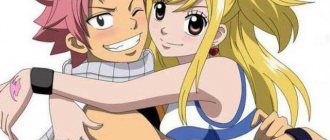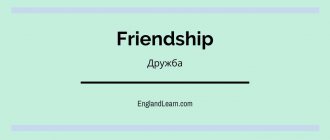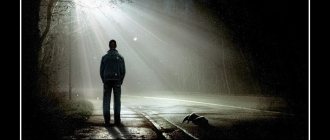About sport
| Karate means strengthening your spirit and honing your technique. But the essence of karate is to always be ready for a fight to the death. |
| I dedicated my whole life to karate. I was alone, but now all over the world I have 10 million young followers following me this way. If there is a first one, then a second one will definitely appear after it, a third one after the second one, and tens of thousands after the third one. |
| He had a reputation for being strong as he was familiar with judo, karate and several high officials. |
| — Roman Gozelsky |
Such people are not accepted into karatekas
This kind of sport requires not only developed intelligence, but also an appropriate attitude. Therefore, the selection of quotes on the topic of martial arts offered here will be of interest to people of any age and gender.
- The winner is obliged to spare the loser. Otherwise the fight turns into murder.
- A karateka must master not only external techniques, but also internal ones.
- Are Buddhist monks also fluent in karate?
- Without constant training, any sport turns into an ordinary bustle.
- What is on the wrestler's mind will be visible to the spectators on the competition site.
- Proper mastery of karate techniques is reminiscent of dancing.
- Any fight requires attention, concentration and passion for sports.
- This type of sport is for real combat, not for play.
- No one has ever fully mastered the art and science of karate.
- Martial arts is more than ordinary fighting.
- Karateka sounds proud.
- No matter how much you master any type of wrestling, it is very difficult to become a master in it.
- Karate is a great Path.
- There are no more samurai. But there are martial arts.
- You should never imagine the death of your opponent. Otherwise, the karateka will easily end up in court.
- A karateka must be able to control every cell of his body.
- Only a true lover of martial arts is able to use oriental forms of wrestling in a difficult situation. The rest are better off relying on their fists.
Styles
Gosoku Ryu
Kubota Takayuki is the founder and president of the International Karate Association.
“I teach the Gosoku Ryu style. It doesn't look too flashy, but it is very effective. I teach how to use force when you need to respond with force, how to use speed when you need to respond with speed, I even teach how to use flight when flight is the only option.
There is no technology that can work effectively in any situation. Every situation is unique and has too many variables. You need a variety of equipment because people are different and you need to have the tools to deal with different opponents. You need to have all the necessary psychic elements, as well as the mind that combines them effectively.
Because I have studied various styles, I understand their strengths and weaknesses. For example, some karate styles are very good at offensive maneuvers, but they lack a lot of defensive moves. This is why sparring against many different styles is so important. In Gosoku Ryu I combined many different methods."
There is no need to (start the block) with powerful movements, because almost every technique starts with virtually no power.
Original text
There is no great need for strength, because nearly every technique begins with virtually no power.
There is no need to (start the block) with powerful movements, because almost every technique starts with virtually no power.
Original text
There is no great need for strength, because nearly every technique begins with virtually no power.
— Kubota Takayuki
Kudo
raising a citizen of Russia - strong, healthy, trained, loving his parents, teachers, friends, proud of his nationality and faith, capable of making the Motherland prosperous and protecting it when threatened. Individuals with healthy ambitions, ambition, armed with the knowledge and skills necessary for the modern world, having good health, able to withstand the intellectual and physical stress of our time, and most importantly, loving people - this is the main task of our work.
Shotokan
Funakoshi Gichin - founder of the style
Secrets of mastery
Some hotheads mistake an ordinary fight for karate. Others consider the heroes of adventure films to be role models for them. Martial arts masters laugh at such naive ideas.
- It is not enough to master the techniques of martial arts. You also need to be imbued with their philosophy.
- If your opponent wants to use death fighting techniques, take a club and hit him on the head. He will immediately change his mind about showing off his skills.
- Never play karate. Take it with the utmost seriousness.
- It is very important that the fight does not turn into an ordinary fight.
- A street karateka looks like a raging hare.
- Any martial skill is an art, culture and philosophy contained in 1 sport.
- What martial arts is to the Japanese, petty hooliganism is to the Russians.
- Anyone who gets into a fight is not a good person. But a good person is quite capable of resisting someone who disturbs his or someone else’s peace.
- Somehow I can’t believe that karate is more effective than ordinary Russian hand-to-hand combat.
- A duel and a fight are far from the same thing.
- Mastering oriental martial arts requires meditation skills. All it takes to hit your opponent in the neck is anger.
- Karate is not entertainment.
- An aggressive person should not be allowed close to wrestling.
- Caution does not at all contradict the principles of martial arts.
- Movie cliches will fail a beginner when he rushes to show his techniques to an unfamiliar opponent.
- Karate is not a frantic temperament. This is calmness, concentration and detachment.
- Anyone who gets into a fight should take into account that many people died in street fights.
- This type of sport sets itself the goal not of beating an opponent to the point of exhaustion, but of gaining a moral victory over him.
- Don't learn karate in random schools.
- Any sport, first of all, represents whole buckets of sweat.
- If 10 people are involved in a fight, then such a fight is not a fight, but a dump.
- A successful technique used on the street can land a master in prison.
- A real fight often turns out to be completely different from the beauty of Hollywood films.
- There is no need to talk too much about Eastern martial arts. They need to be studied.
- A drunkard has no place in this sport.
- Combat is for defense, not attack.
- If you don't understand the essence of karate, don't try to master it.
- You shouldn't learn techniques from action movies. Better sign up for the section. Most likely, you will become bored after the first lesson.
- Such types of struggle, mastered by a fool, can be dangerous.
Oyama fought bulls for publicity
Descending from Mount Kuyosumi in 1949, Oyama decided to test his skills. To do this, he decided to fight a bull. It cannot be said that this has not been done before - for example, in neighboring China, this was a national sport among the Hui people.
However, confrontation with a five hundred kilogram machine of muscles, hooves and horns is a tough test for a fighter, the very thought of it can make you tremble.
Master Oyama began by finding an acquaintance at the slaughterhouse and trying to kill a tied bull there with a blow to the forehead - it was in this place that the slaughterers killed him with a blow from a sledgehammer. But the bull, despite the crack in his skull and blood from his nose, only became enraged. As he writes in his article “Oyama Masutatsu. Deadly bullfight” Oleg Artemenko, Oyama did not fully understand the technology of slaughtering bulls: it later turned out that the slaughterers’ sledgehammer had a special spike that killed the bull by striking the brain. The same article says that, after conducting many fights, the master, according to different versions, defeated 47, 49 or 50 bulls. In this case, three animals died.
Rumors about the master’s fight with bulls spread throughout Japan, and he received the nickname “Oyama, the bull killer.” It was an excellent publicity stunt, and the master’s fame began to grow more and more.
In 1953, the first fight between Master Oyama and a bull was recorded on film. The filmmakers made a thirty-minute film, the further history of which, unfortunately, is unknown.
But, we can still see footage of the confrontation between Masutatsu Oyama and the bull. In 1954, the film “Karate vs. the Fierce Bull” was filmed, directed by Hara Chiaki. And part of this film has survived to this day. In a short fragment, Oyama can be seen wrestling with a bull, grabbing it by the horns and throwing it to the ground. True, during the fight he also uses a rope threaded through a ring into the animal’s nose. This place is very sensitive and any manipulation with it makes the bull obey the enemy. However, the bull managed to slash Oyama's stomach, leaving a wound. If the horn had gone five millimeters deeper, it would have caught the internal organs.
The duel ends with the master throwing the bull to the ground and supposedly knocking off its horn with a blow of his hand: the swing and the blow are visible, and then only the horn is already rolling on the ground.
Before the bull fight there was also a special training. During classes, students often took boards with wedges depicting bull horns and ran at Oyama in turn from different sides. He dodged. In another exercise, a construction cart was taken, sandbags were placed on it, and imitation antlers were installed. The students pushed the cart towards the master, he grabbed its “horns” and tried to turn it over.
He fought with Oyama bulls abroad. And if in the USA animal rights activists banned him from such fights, then in Mexico in 1957 the master almost died: envious local bullfighters pumped the bull with stimulants and he injured Oyama’s knee. This fight is known from the book by master Maki Hisao’s student “Masutatsu Oyama. 10 death matches."
According to Oyama himself, he also wanted to fight a tiger, a bear and a gorilla. But, fortunately for everyone, these fights were banned.
Steve Arneil with Master Oyama
Oyama not only fought with animals himself, but also wanted the same from his students. One day the master turned to his student from Africa, Steve Arneil, with a request to defeat a crocodile in order to advertise the school. Steve at first tried to dissuade the master from the idea, but eventually gave up.
Arriving at a friend’s crocodile farm, he told him about his desire, to which he suggested that they simply approach the animal first. As soon as Steve moved towards the crocodile, it opened its mouth in rage and rushed at him. According to Arneil, he had never run so fast or squealed so loudly.
Oyama twice went into the mountains as a hermit to train.
Mount Minobu
The first time Oyama went into the mountains from people was in 1946 - to a small Buddhist temple near Mount Minobu in Chibo Prefecture. True, the hermitage cannot be considered complete - the master communicated with local residents, regularly bought food and received money from his sponsor. But he cannot be called easy either - his student named Yashiro, who went into hermitage with his teacher, ran away six months later, unable to withstand the tests.
After that, Oyama trained alone for another six months, until he ran out of money for food. After his hermitage, the master returned to the world, but it was not happy to see him. Japan was experiencing a post-war crisis - the gym where Oyama began his career as a karate teacher was closed.
Master Oyama breaks stones
After several fights with hooligans and the American military police, the master went to prison, and upon his release in April 1948, he retired to Mount Kuyosumi in the same Chibo Prefecture and lived and trained there completely alone for 18 months. When Oyama became completely unbearable, he shaved one of his eyebrows, as the Korean master So Nei Chu taught him to do - in this form it was a shame to return to people.
Oyama once fought against a huge fighter - and defeated him with three blows
Master Oyama's track record of fights with real opponents is legendary - he is credited with 270 real fights and victory in all of them. However, only four fights against boxers and wrestlers are known for certain. And the figure 270 came from a misunderstood quote from Oyama’s book “Dynamics of Karate”, where he talks about 270 demonstration performances and three real fights that ended in victories. One fight, against Dick Reel, is not mentioned by Oyama, so we can conclude that it could have been fixed.
This battle is described in the book Zen Combat by American Jack Gluck. According to the author, once during a trip to the United States, Master Oyama saw a performance by a huge wrestler named Dick Reel. More than two meters tall, he challenged any spectator to a fight without rules, promising a prize of $1,000. Oyama came out, 170 cm tall and weighing 77 kg.
Having started the fight, Masutatsu noticed that the enemy was defending himself well. Then he performed a deceptive feint, and when Dick raised his hands in defense, he delivered a crushing blow to the sternum with his fist, after which he hit him twice more, knocking out his opponent.
The next, definitely real, fight took place in the town of Desmon. During a brick-breaking performance, a huge policeman weighing one hundred and thirty kilograms volunteered to repeat Oyama's trick. Despite his training in judo, he clearly did not know how to break bricks, so he injured his hand and, in a rage, challenged the Japanese to a duel.
Further information from Gluck and Master Oyama himself differs. The American writes that, shielding himself from a side blow, the Japanese broke the ribs of a policeman and thus won. Masutatsu, in his interview, said that he hit his opponent in the groin, which infuriated the audience, so much so that the Japanese was saved from reprisal only by the police who arrived soon after.
The next fight took place in Chicago against 120-kilogram wrestler Dan Calendar. In the article by Alexey Gorbylev “Oyama challenges (fights with boxers and wrestlers)”, in Oyama’s words, a fight is described that ended in 10 seconds, after he, having blocked a side kick, jumped up and hit the opponent twice in the neck and temple. Whether it is realistic to deliver two effective strikes with one hand in one jump is an open question.
Oyama's last fight in the United States was against a boxer named Becker. He was comparable in size to Oyama and made excellent use of his agility and lightness on his feet, preventing the enemy from attacking him. He was so uncomfortable for the Japanese that he even fell out of the ring during one of his attacks. And yet, Oyama picked up the key to victory - a few seconds before the end of the fight, he jumped back, perplexing the enemy, and then, on a long, protracted jump, punched the enemy in the solar plexus, knocking him out.
Quotes
• A warrior on the battlefield has no time to theorize. He must concentrate all his spirit on what he is doing and devote himself to his own death. • Winning all battles is important. But even defeat can teach you a lot that must be used to win future battles. • Karate is a fight for life and death!! To lose means to die!! • Karate life is kumite and kumite life is kihon.
• The training starts with basic technique and ends with basic technique. • Those who practice martial arts must be fearless, enter the world honestly and courageously, and be strong in battle.
Three important rules...:
Never be a slave to money.
When a very strong enemy tries to commit any unjust or illegal act, one must be brave and fight. You should also always courageously resist attempts by the powerful to infringe on your rights.
You should never engage in financial fraud or bribery of other people.
All this is part of the faith of a person who practices karate.
• The main thing that can be taken away from a battle carried out on the edge of life and death is justice, respect and fidelity to the path. And the acquisition of these qualities always promises victory. Compared to them, money and fame are insignificant trifles.
• On the Path of martial art, you need to be the first in everything, but at the same time avoid conflicts due to personal gain.
• A person who understands human and social relations superficially forgets that he cannot exist without others. A greedy person is mired in desires to have more than others and to have a better time than others, forgetting that he must be noble, that someone is nearby. Selfish desires go against sociability, which is a fundamental part of being human. The rules of politeness teach that all people should live equally happy lives.
• Wisdom is usually associated with culture, and although it is easy to think that wisdom is nothing more than culture, this opinion is mistaken. For true wisdom, courage and fortitude must be associated with culture.
• He who is pure in heart is like Heaven. This means that a person does not need to be afraid of anything if his spirit is not clouded, if there is no reason for shame and if he has no doubts about the correctness of the chosen path. Such a person has already dedicated his life to the service of others and, therefore, is ready to face any danger with all his resolve.
• We must always remember that in order to be kind and reasonable, we need to respect the customs of the society in which we live. One of the important principles of maintaining harmony between the individual and society is courtesy and mutual respect.
• A warrior or a person who devotes himself to the art of war lives in constant danger, and he always needs strength and courage. But the world despises rude and unpleasant people who rely only on strength and courage. Therefore, politeness and respect are more important for karatekas than for others.
• There is no need to wear expensive clothes, just clean clothes.
• Young people who do not love and respect their parents are unlikely to achieve anything significant. Such people cannot win, and if they do win, they will not retain any of their friends, loved ones, or teachers.
• Force without justice is useless, justice without force is also useless.
• The path of martial art begins with ritual and ends with ritual. Therefore, the ritual must always be correct.
• One of the most difficult tasks a person faces is choosing comrades who will not betray him.
• A great person is someone who creates something out of nothing.
• A real man, having given his word, always keeps it!!
• We must treat the kata as the letters on which the sentences and phrases of our karate are expressed.
• Forms performed solely for the purpose of display are meaningless in karate.
• A person who has mastered proper breathing control can be calm even when surrounded by strong enemies, during earthquakes and fires.
• The most important thing in karate is the Nominal Exercises. They intertwined all the techniques of defense and attack. For this reason, we must be fully aware of their analytical significance and we must execute them correctly.






